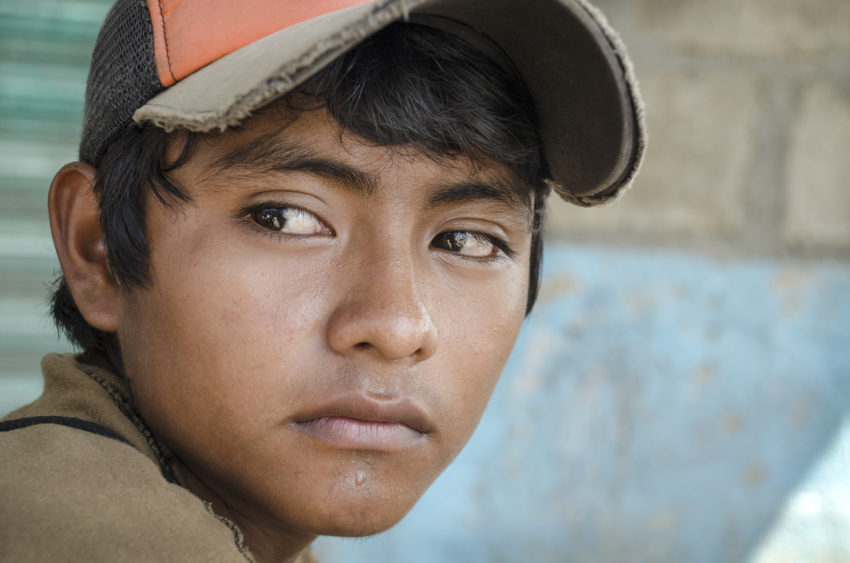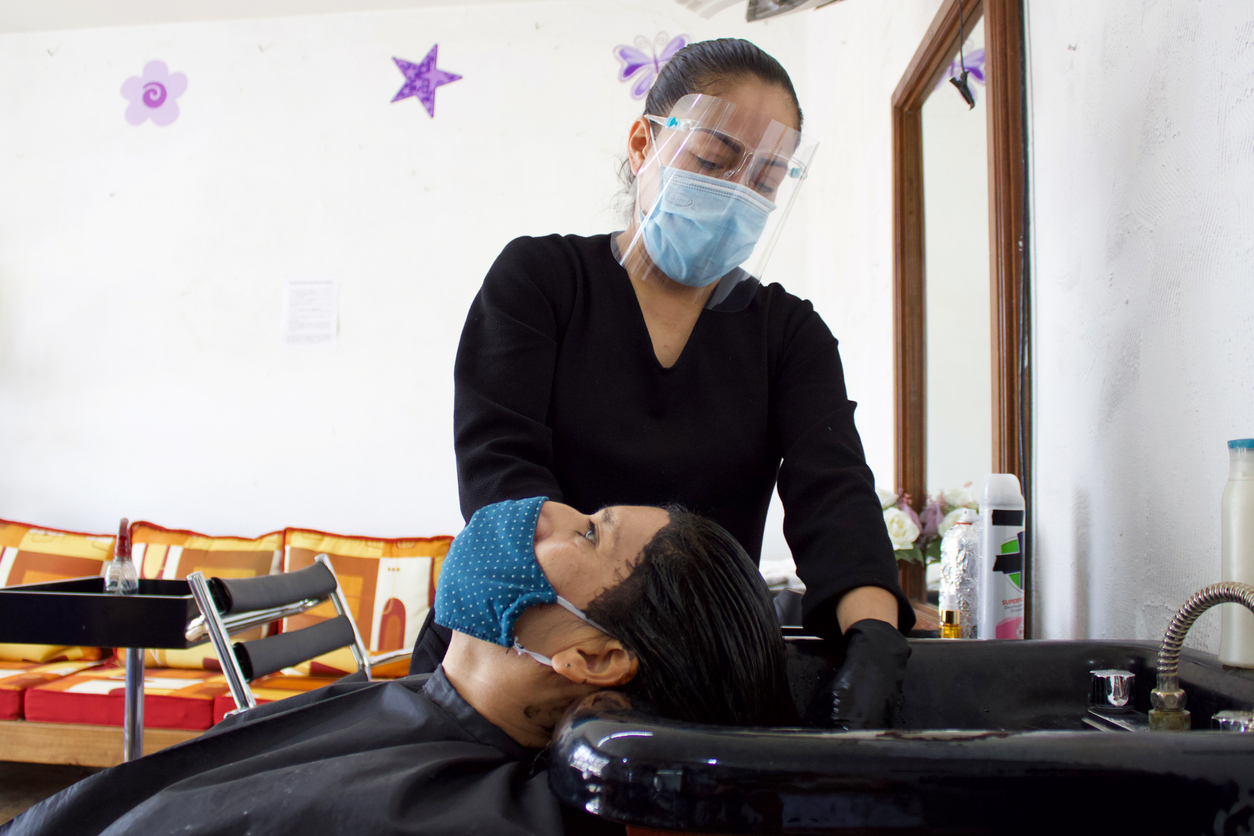
Share On Social!
This is part of the Salud America! Achieving a Cohesive Culture for Health Equity in Latino and All Communities: A Research Review»
Moral Disengagement Is a Key Mechanism People Use to Excuse Discrimination among People of Color, Those in Poverty
Moral disengagement is the cognitive process of decoupling one’s internal moral standards from one’s actions, thus allowing oneself to conduct unethical behavior without feelings of guilt or distress.65
In simpler terms, it is the psychological process of rationalizing bad decisions, by convincing oneself that ethical standards do not apply within a particular context or situation. Moral disengagement has been studied in relation to cruelty to animals, support for the death penalty, or in cases where victims are said to have “brought the harm onto themselves.”66
Moral disengagement can be broken down into four categories by which the perpetrator justifies his or her actions:
- moral justification; reconstructs the immoral action as serving the greater good;
- diffusing responsibility; attributes the immoral action to an order from an authority figure;
- mis-presenting injurious consequences; the perpetrator tells him/herself that the outcome of the action will not be a “big deal”; and
- dehumanizing the victim; the perpetrator reduces his/her identification with the victim, saying the victim did something to make themselves a target for the action.66
Latinos Experience People Acting with Moral Disengagement
Unfortunately, Latinos and other out-groups suffer the consequences of implicit biases that result in negative interactions with those acting with moral disengagement, often at the doctor’s office, with law enforcement officials, during the hiring process, or at the work place.66
According to a recent Pew Research Center poll, 70% of Latino immigrants in the United States believe that discrimination is a major hindrance to their success in this country. The associations between perceived discrimination and depression, anxiety, self-esteem, poor academic performance, and poor social skills make this difficult to refute.67
 Discrimination isn’t reserved for only immigrants and minority groups. Social dominance, or group-based social hierarchy where superior groups dominate over inferior groups, influences how we view those living in poverty. Beliefs about causes of poverty can be classified into three types: individualistic, where poor people themselves are believed responsible due to immorality, poor money management, or laziness; structuralist, where the socioeconomic system itself fails to provide jobs, sufficient wages, and good schools; and fatalistic, where poverty is believed to be a result of illness, handicaps, or bad luck. In the United States, there is an overall negative view of the poor, with most attributions of the causes of poverty being individualistic. Myths legitimizing these beliefs, such as the bootstraps myth, work to enhance the social hierarchy. While exposure to the poor in an impersonal way, such as panhandling, usually negatively reinforces negative feelings and beliefs, interpersonal or intergroup contact may change a person’s beliefs about out-group members in a positive way.56
Discrimination isn’t reserved for only immigrants and minority groups. Social dominance, or group-based social hierarchy where superior groups dominate over inferior groups, influences how we view those living in poverty. Beliefs about causes of poverty can be classified into three types: individualistic, where poor people themselves are believed responsible due to immorality, poor money management, or laziness; structuralist, where the socioeconomic system itself fails to provide jobs, sufficient wages, and good schools; and fatalistic, where poverty is believed to be a result of illness, handicaps, or bad luck. In the United States, there is an overall negative view of the poor, with most attributions of the causes of poverty being individualistic. Myths legitimizing these beliefs, such as the bootstraps myth, work to enhance the social hierarchy. While exposure to the poor in an impersonal way, such as panhandling, usually negatively reinforces negative feelings and beliefs, interpersonal or intergroup contact may change a person’s beliefs about out-group members in a positive way.56
In a 2014 study by Craig and Richeson,68 ninety-two white participants were recruited to participate in a web-based survey that included reading about either the projected (2042) U.S. racial demographics as a “majority-minority” demographic makeup, or about the current (2010) U.S. racial demographics. Following the reading, the participants completed a self-report measure of racial bias. There were 86 participants in the final sample, 44 of which read about the future racial demographic shift, and 42 of which read about the current U.S. racial makeup. Racial bias was assessed using the Evaluative Bias Scale, a 6-item measure of individuals’ preferences for interactions with their own racial group and relative discomfort with other racial groups. The items were ranked by participants using a scale from 1, or strongly disagree, to 7, or strongly agree. Example questions included “I would rather work alongside people of my same ethnic origin” and “it would bother me if my child married someone from a different ethnic background.” Participants who read about the future demographic shift revealed more racial bias than those who read about current demographics (P = 0.0250).68
A second analysis aimed to determine whether the future racial shift information would lead whites to express more racial bias toward specific racial groups; in other words, would knowing that the majority-minority shift is mostly due to an increase in the Latino population lead to greater expression of bias against Latinos? Data for the study came from 414 white participants in the Time-Sharing Experiments for the Social Sciences (TESS) online survey. Half of the participants were assigned to the majority-minority data group, and the other half comprised a control group that received information about geographic mobility projections. Regardless of the condition, participants felt more positively toward the in-group versus Asian Americans and African Americans and felt the least positivity toward Latinos (all p<0.05). The experimental group had greater negative attitudes overall than the control group.68
There are many factors that influence and foster anti-immigrant sentiment. The labor market competition theory, or the idea that anti-immigrant sentiment stems from the belief that an influx of unskilled immigrants will result in lower wages and higher rates of unemployment for non-immigrants, is a socioeconomic determinant that may be partially, but is certainly not fully, responsible for discrimination against immigrants. Socioculturally, people may be opposed due to the desire to preserve a national language. From a psychosocial standpoint, social identity theory likely has an impact on anti-immigrant feelings.69
Social Identity Plays a Role in Moral Disengagement
Social identity theory refers to a person’s feeling of belonging to a certain social group and his or her desire to maintain a positive social identity through membership to that group, as belonging creates positive feelings toward the group and its members. This can result in one group member or members acting on behalf or in defense of another member or members, even if there is no personal relationship. It also creates antipathy and negative attitudes toward out-group members. A perceived threat to the identity associated with the in-group, in the case of immigrants versus non-immigrants, can result in discrimination and prejudice toward immigrants.69
Bazo Vienrich and Creighton69 used random-digit dialing to sample 1486 respondents for a questionnaire about opposition to a closed border. There were 733 respondents in the control group and 753 respondents in the treatment group; combined racial makeup was 78.7% white, 10% black, and 11.4%Latino. Control group participants were provided a direct question asking whether they supported or opposed cutting off all immigration to the United States; the purpose of this question was to measure overt opposition. The control group was then provided a list with the following three items: the federal government increasing assistance to the poor; professional athletes making millions of dollars per year; and large corporations polluting the environment. Respondents were asked how many of the three items they opposed but were not asked which items they were opposed to specifically. The treatment group was provided the same list but with one additional item about cutting off all immigration to the United States.69
 Latino respondents showed the most overt opposition to a closed border, with 52% being opposed. Of the white respondents, 43% were overtly opposed, and 30% of black respondents were overtly opposed. There was no significant difference between overt and covert opposition among Latino respondents (52% versus 55%), demonstrating that Latinos are not reluctant to voice their opposition to a closed border. However, there were significant differences in overt and covert opposition among white and black respondents. Covertly, 28% of whites opposed a closed border, a 15-point difference, and just 13% of blacks opposed a closed border, a 17-point difference. These results show significant social desirability bias among white and black respondents, who are likely to underreport anti-immigrant sentiment to appear more tolerant.69
Latino respondents showed the most overt opposition to a closed border, with 52% being opposed. Of the white respondents, 43% were overtly opposed, and 30% of black respondents were overtly opposed. There was no significant difference between overt and covert opposition among Latino respondents (52% versus 55%), demonstrating that Latinos are not reluctant to voice their opposition to a closed border. However, there were significant differences in overt and covert opposition among white and black respondents. Covertly, 28% of whites opposed a closed border, a 15-point difference, and just 13% of blacks opposed a closed border, a 17-point difference. These results show significant social desirability bias among white and black respondents, who are likely to underreport anti-immigrant sentiment to appear more tolerant.69
In a 2010 study, McAlister conducted a statewide telephone survey in Texas to determine whether moral disengagement was associated with tolerance for health care inequality. The author defined moral disengagement as the act of people pardoning themselves for inflicting suffering upon others via self-deceptive psychological maneuvers. These maneuvers include the minimization of perceived harmful consequences, dehumanization and blaming of harmed victims, and engaging in justifications that rationalize harmful actions.70,71
The survey asked participants about their age, gender, education, income, political affiliation, and political ideology, as well as questions measuring general support for government actions to reduce economic inequality and support for specific programs such as free health care. As a measure of moral disengagement, participants were asked whether they made moral justifications, whether they were willing to victim-blame those with social inequality, and whether they tended to minimize perceived suffering.70
Of the 1,063 participants who completed surveys, those who identified as conservative Republicans were more opposed to government programs to reduce inequality compared to other groups; 30% of conservative Republicans believed that the government should reduce gaps in social equality, compared to 60% of moderate or liberal Democrats. Most of the survey respondents supported action to increase access to government subsidized health insurance, though this was supported least by conservative Republicans at 55%, versus 87% of moderate or liberal Democrats. Those respondents who agreed with statements of moral disengagement were less likely to support government subsidized health insurance than those who disagreed, and 68% of those who believed that too much government reduces people’s willingness to help themselves supported reducing health care disparities, while 82% of those who disagreed with that statement did.70
Crawford et al.72 conducted a series of studies to investigate whether social ideologies — restrictions on personal freedom, for example — or economic ideologies, such as the role of government in regulating the economy, were more likely to predict prejudice against those with opposing views. The authors proposed several hypotheses. The dimension-specific hypothesis supposed that people would perceive conflict between their own social and economic views and those of others, fueling negative intergroup attitudes. Crawford et al. predicted that social conservatism, but not economic conservatism, would predict prejudice against socially liberal individuals; social, but not economic, liberalism would predict prejudice against socially conservative individuals; economic conservatism would predict prejudice against economically liberal individuals, and vice versa. The social primacy hypothesis presumed that both the social and economic ideological dimensions would predict ideological conflict, but the effects would be greater in the social dimension; the social-specific asymmetry hypothesis postulated that social conservatives would express prejudice, but social liberals would not, as need for closure and certainty is associated with social conservatism.72
The authors conducted five separate studies to test these hypotheses. The dimension-specific hypothesis received the most support, with social and economic conservatives tending to be more biased against social and economic liberals, and social and economic liberals tending to be more biased against social and economic conservatives, respectively. Two out of the five studies supported the social primacy hypothesis, while the social-specific asymmetry hypothesis did not receive any support, meaning that social conservatives were in fact not uniquely biased. Overall, the results showed that social issues are associated with more hostility than economic ones, and that, while worldview conflict fuels political prejudice, it is not necessarily a driver of discrimination.72
Moral Disengagement and the Knowledge of Human Suffering
Paluck et al.73 conducted a series of studies to test their hypothesis that ignoring news about human suffering could lead to lessened concern for issues related to that suffering.
The first study included 232 university students who were recruited to participated in a study called “Global Attitudes and Mood.” The students were randomly assigned to one of three conditions: an attention condition, a distraction condition, or a control group. Each participant was to arrive to a campus building lobby and directed to sit on a couch facing a television. In the control condition, the television was off; in the other two conditions, the television was on at low volume.63
Those in the control arm waited in the quiet room for the experimenter to return. Those in the attention condition were told they were free to watch television while they waited; those in the distraction condition were given illusion-of-choice instructions: they were free to watch television while they waited, but at some point, either while they waited or at the end of the study, they would need to complete a brief task on a laptop placed on the table in front of them. All but two of the participants chose to perform the task in front of the television rather than waiting until the end.73
 In the attention condition and the distraction condition, real pre-recorded news footage of a famine in Niger was played on the television, with captions at the bottom of the screen. The footage included a crying and emaciated baby and child. Prior to the end of the news program, the experimenter returned to the room, turned the television off, and removed the skin sensors. Participants then completed a survey that included rating the importance of certain political issues (hunger reduction, poverty reduction, the war in Afghanistan, and the abortion rights debate, among others), the allocation of a fictitious budget toward five issues (poverty and malnutrition, education and arts, foreign and crisis relief aid, defense and intelligence, and bio-diversity and the environment), and an assessment of mood.73
In the attention condition and the distraction condition, real pre-recorded news footage of a famine in Niger was played on the television, with captions at the bottom of the screen. The footage included a crying and emaciated baby and child. Prior to the end of the news program, the experimenter returned to the room, turned the television off, and removed the skin sensors. Participants then completed a survey that included rating the importance of certain political issues (hunger reduction, poverty reduction, the war in Afghanistan, and the abortion rights debate, among others), the allocation of a fictitious budget toward five issues (poverty and malnutrition, education and arts, foreign and crisis relief aid, defense and intelligence, and bio-diversity and the environment), and an assessment of mood.73
Participants who were distracted during the famine broadcast cared less about famine-related political issues compared to those who watched the broadcast without a distraction and compared to participants in the control condition. Political issues unrelated to famine were not rated any differently between groups. Those in the distraction condition also allocated less of the budget to poverty and malnutrition compared to the other groups, though this result was not statistically significant. In addition, participants in the attention condition reported significantly more negative mood compared to the other conditions.73
The second study aimed to replicate the first using online media instead of television news media. Participants were asked to watch videos as part of a test related to online visual processing and were to choose a single one-minute video from a list of three videos with short descriptions. Once the video had been selected, the participant pressed play, and a brief promotional video appeared, similar to the advertisements that appear before most online video content. The promotional video in the famine condition was the same as in the first study, and the video in the computers condition was a 30 second promotion about Dell computers. Half of the participants in each of these two conditions were randomly assigned to either the dismissal condition, where they could opt to skip the video after eight seconds, or the attention condition, with no option to dismiss. The survey was the same as in the first study, albeit with a shortened mood scale.73
Those in the dismissal-famine condition showed less concern for famine-related political issues than those in the attention-famine condition and the dismissal-computers condition, and those in the attention-famine condition reported more concern for famine-related political issues than those in the control condition, and significantly more compared to those in the attention-computers condition. Those in the attention-famine condition also reported significantly greater negative mood than the other conditions.73
In the third study, participants were randomly assigned to the distraction group or the control group. In the distraction group, participants were led to a waiting room and instructed to sit at a table. At one end of the room was another table containing gadgets and magazines; at the other end of the room was a television at low volume. In the control condition, the television was off. Participants in the distraction condition were told they were free to play with the gadgets or read magazines during the six-minute television programming (again, a pre-recorded news report of the famine in Niger). Participants in both groups were to complete the same survey as in the first study. Results showed that participants in the distraction condition rated famine-related issues as significantly less important and allocated significantly less of the budget to poverty and malnutrition. The results of these studies support the authors’ hypothesis that ignoring news about human suffering can lead to indifference toward suffering.73
See the full guide on moral disengagement »
See the Guide: Moral Disengagement!
See the full guides on the other key mechanisms of discrimination »
See the Guide: System Justification!
More from our Research Review »
- Introduction/Methods
- Research: Poverty among Latinos
- Research: Rural Poverty
- Research: Poverty and Healthcare
- Research: Discrimination and Education
- Research: Discrimination and Outcomes
- Mechanism: Implicit Bias
- Mechanism: System Justification
- Mechanism: Moral Disengagement
- Strategy: Intergroup Contact Theory
- Strategy: Peer Modeling
- Strategy: Implicit Bias Training
- Strategy: Effective Communication
- Strategy: Social Media for Social Change
- Strategy: Building Social Cohesion
- Policy Implications
- Future Research
References for this section »
56. Hunt MO, Bullock HE. Ideologies and Beliefs about Poverty. May 2016. doi:10.1093/OXFORDHB/9780199914050.013.6
63. Shafir E. Decisions in poverty contexts. Curr Opin Psychol. 2017;18:131-136. doi:10.1016/j.copsyc.2017.08.026
65. Moore C. Moral disengagement This review comes from a themed issue on Morality and ethics. Curr Opin Psychol. 2015;6:199-204. doi:10.1016/j.copsyc.2015.07.018
66. Cantu-Pawlik S. What is Moral Disengagement? | Salud America. https://salud-america.org/what-is-moral-disengagement/. Published April 16, 2019. Accessed June 15, 2020.
67. Kiehne E, Ayón C. Friends or Foes: The Impact of Political Ideology and Immigrant Friends on Anti-Immigrant Sentiment. Vol 43.; 2016.
68. Craig MA, Richeson JA. More Diverse Yet Less Tolerant? How the Increasingly Diverse Racial Landscape Affects White Americans’ Racial Attitudes. Personal Soc Psychol Bull. 2014;40(6):750-761. doi:10.1177/0146167214524993
69. Bazo Vienrich A, Creighton MJ. What’s left unsaid? In-group solidarity and ethnic and racial differences in opposition to immigration in the United States. J Ethn Migr Stud . 2017. doi:10.1080/1369183X.2017.1334540
70. McAlister AL. Moral disengagement and tolerance for health care inequality in Texas. Mind Soc. 2010;9(1):25-29.
71. McAlister AL, Patnaik A. Understanding Opposition to Disparity Reduction. In: 13th Annual Disparities in Helath in America: Working Toward Social Justice Workshop. Houston, TX; 2015.
72. Crawford JT, Brandt MJ, Inbar Y, Chambers JR, Motyl M. Social and economic ideologies differentially predict prejudice across the political spectrum, but social issues are most divisive. J Pers Soc Psychol. 2017;112(3):383-412. doi:10.1037/pspa0000074
73. Paluck EL, Shafir E, Wu SJ. Ignoring alarming news brings indifference: Learning about the world and the self. Cognition. 2017;167:160-171. doi:10.1016/j.cognition.2017.03.017
By The Numbers
3
Big Excuses
people use to justify discriminatory behavior



